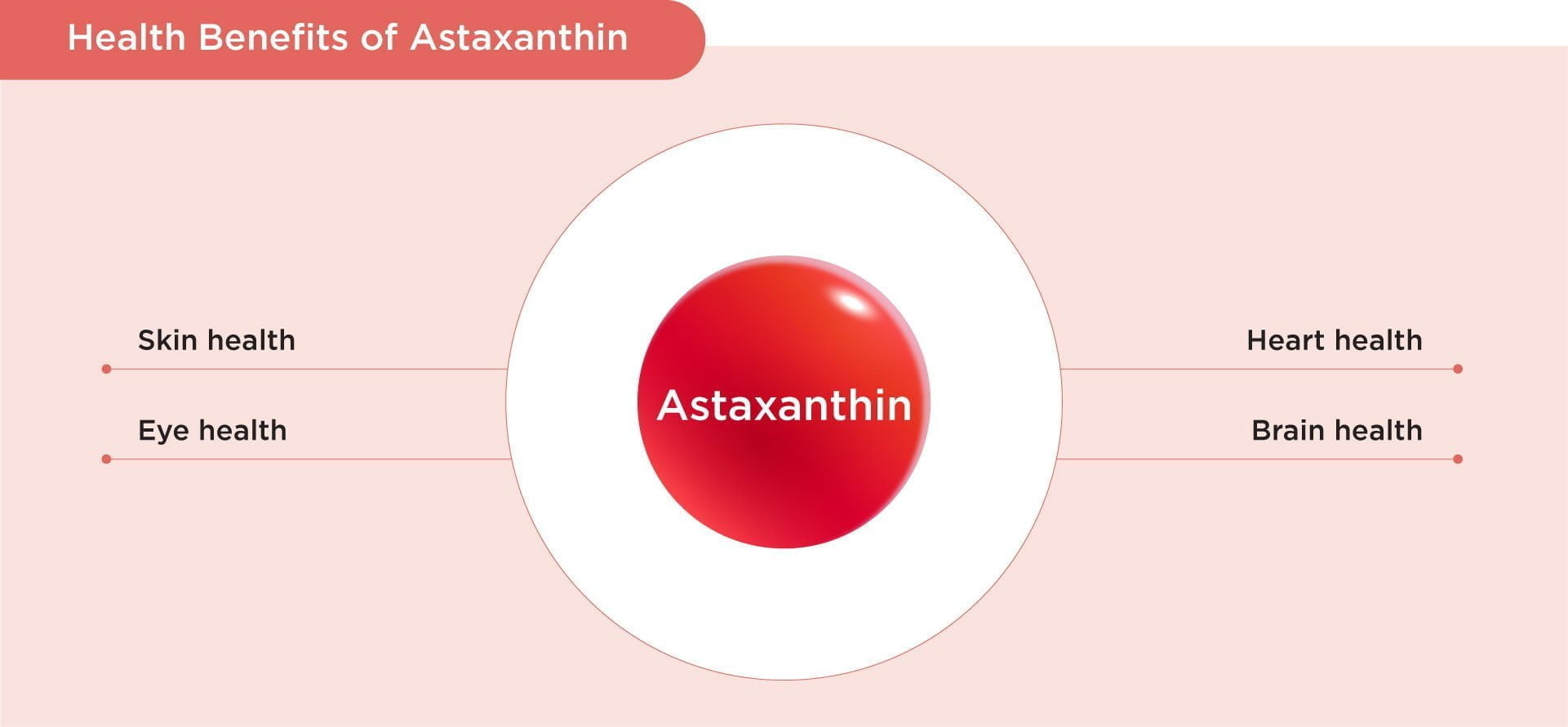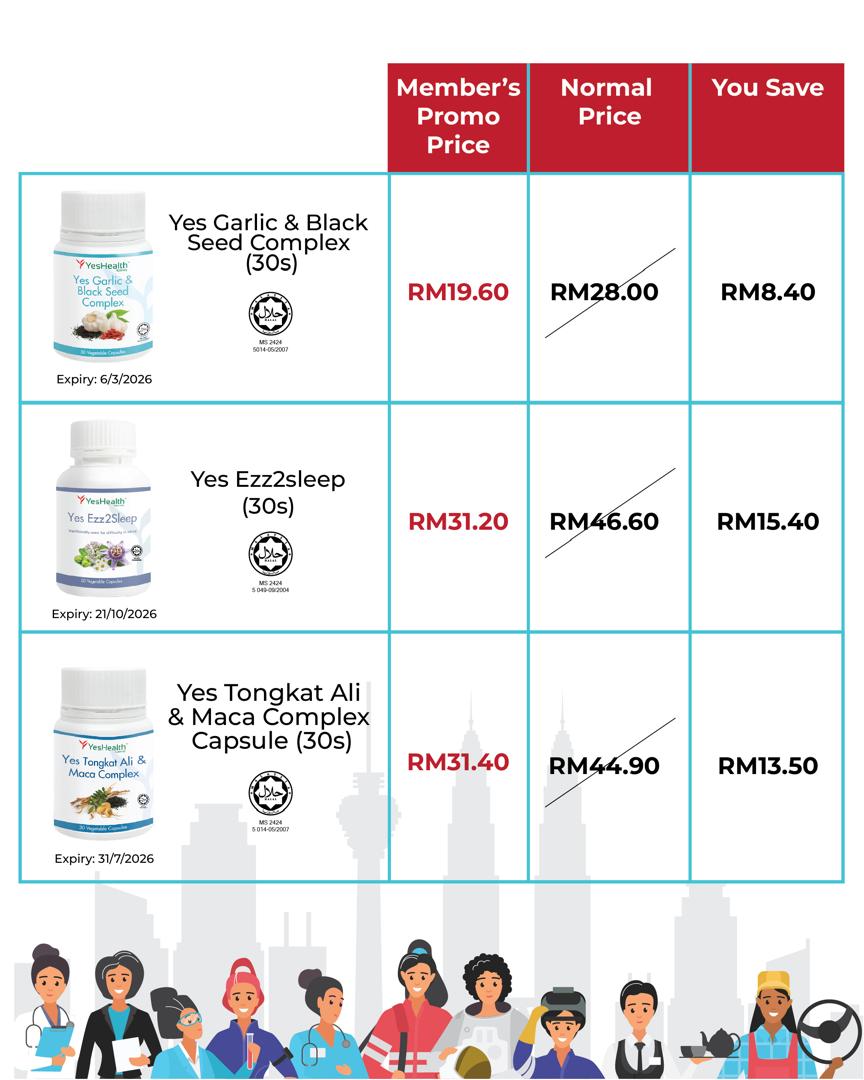Astaxanthin

Astaxanthin
Astaxanthin is a red, fat-soluble pigment which belongs to the carotenoid family 1. Astaxanthin cannot be produced by humans, hence it should be obtained from diet or supplement 2. The natural sources of astaxanthin are algae, yeast, salmon, krill, shrimp and crayfish. Haemactococcus pluvialis is a green microalga, one of the best sources of natural astaxanthin for human consumption 1.
Fun Facts
Astaxanthin is a member of xanthophyll carotenoid 1. It contains conjugated double bonds, hydroxyl and keto groups, which give rise to both lipophilic (lipid-loving) and hydrophilic (water-loving) properties 1. This type of conjugated double bond acts as a strong antioxidant. Astaxanthin showed better biological activity than other antioxidants, because it could link with cell membranes from inside to outside 1.
Published Health Benefits
1. Skin health
Its strong antioxidant properties play a protective role in improving overall skin appearance. Astaxanthin can improve skin moisture, reduce wrinkles formation and hyperpigmentation, and prevent the photoaging that occurs on human skin 3.
2. Eye health
Clinical studies have shown supplementing with astaxanthin improves visual acuity, contrast sensitivity and vision-related functions, also helps improve tear production and stability to alleviate eye strain symptoms 4.
3. Heart health
Astaxanthin has shown suppressed oxidative stress, reduced LDL-cholesterol and increased HDL-cholesterol, thus decreased risk of arterial blockage 5. It also improves heart contractility and exercise tolerance 6.
4. Brain health
Astaxanthin has neuroprotective properties including anti-inflammatory, anti-apoptotic and antioxidant effects 7. All these help promote or maintain brain plasticity. Recent study also found astaxanthin able to improve mood and support mental wellness 8.
Recommended Daily Dose
It is recommended to consume astaxanthin with omega-3 rich seed oils such as chia, flaxseed, fish, nutella, walnuts and almonds 1. Recommended dose of astaxanthin is 2-4mg/day, and considered to be safe up to 6mg/day 1.
References:
1. Ambati, R. R., Phang, S. M., Ravi, S., & Aswathanarayana, R. G. (2014). Astaxanthin: sources, extraction, stability, biological activities and its commercial applications–a review. Marine drugs, 12(1), 128–152. https://doi.org/10.3390/md12010128
2. Guerin, M., Huntley, M. E., & Olaizola, M. (2003). Haematococcus astaxanthin: applications for human health and nutrition. Trends in Biotechnology, 21(5), 210-216. https://doi.org/10.1016/S0167-7799(03)00078-7
3. Davinelli, S., Nielsen, M. E., & Scapagnini, G. (2018). Astaxanthin in skin health, repair, and disease: a comprehensive review. Nutrients, 10(4), 522. https://doi.org/10.3390/nu10040522
4. Giannaccare, G., Pellegrini, M., Senni, C., Bernabei, F., Scorcia, V., & Cicero, A. (2020). Clinical applications of astaxanthin in the treatment of ocular diseases: emerging insights. Marine drugs, 18(5), 239. https://doi.org/10.3390/md18050239
5. Fassett, R. G., & Coombes, J. S. (2012). Astaxanthin in cardiovascular health and disease. Molecules (Basel, Switzerland), 17(2), 2030–2048. https://doi.org/10.3390/molecules17022030
6. Kato, T., Kasai, T., Sato, A., Ishiwata, S., Yatsu, S., Matsumoto, H., Shitara, J., et al. (2020). Effects of 3-month astaxanthin supplementation on cardiac function in heart failure patients with left ventricular systolic dysfunction-a pilot study. Nutrients, 12(6), 1896. MDPI AG. Retrieved from http://dx.doi.org/10.3390/nu12061896
7. Grimmig, B., Kim, S. H., Nash, K., Bickford, P. C., & Douglas Shytle, R. (2017). Neuroprotective mechanisms of astaxanthin: a potential therapeutic role in preserving cognitive function in age and neurodegeneration. GeroScience, 39(1), 19–32. https://doi.org/10.1007/s11357-017-9958-x
8. Talbott, S., Hantla, D., Capelli, B., Ding, L., Li, Y., & Artaria, C. (2019). Effect of Astaxanthin Supplementation on Psychophysiological Heart-Brain Axis Dynamics in Healthy Subjects. Functional Foods in Health and Disease, 9, 521-531. DOI:10.31989/ffhd.v9i8.636









